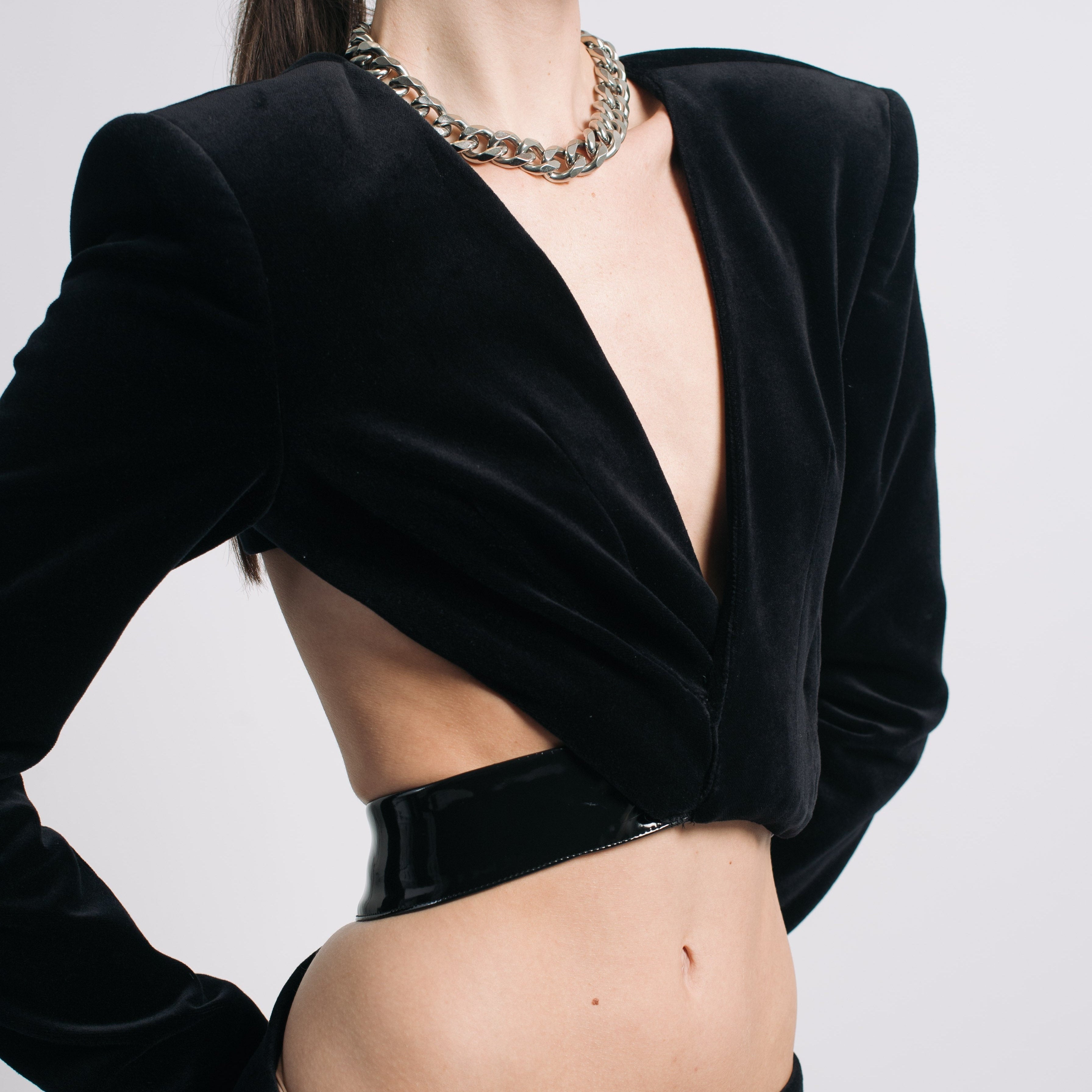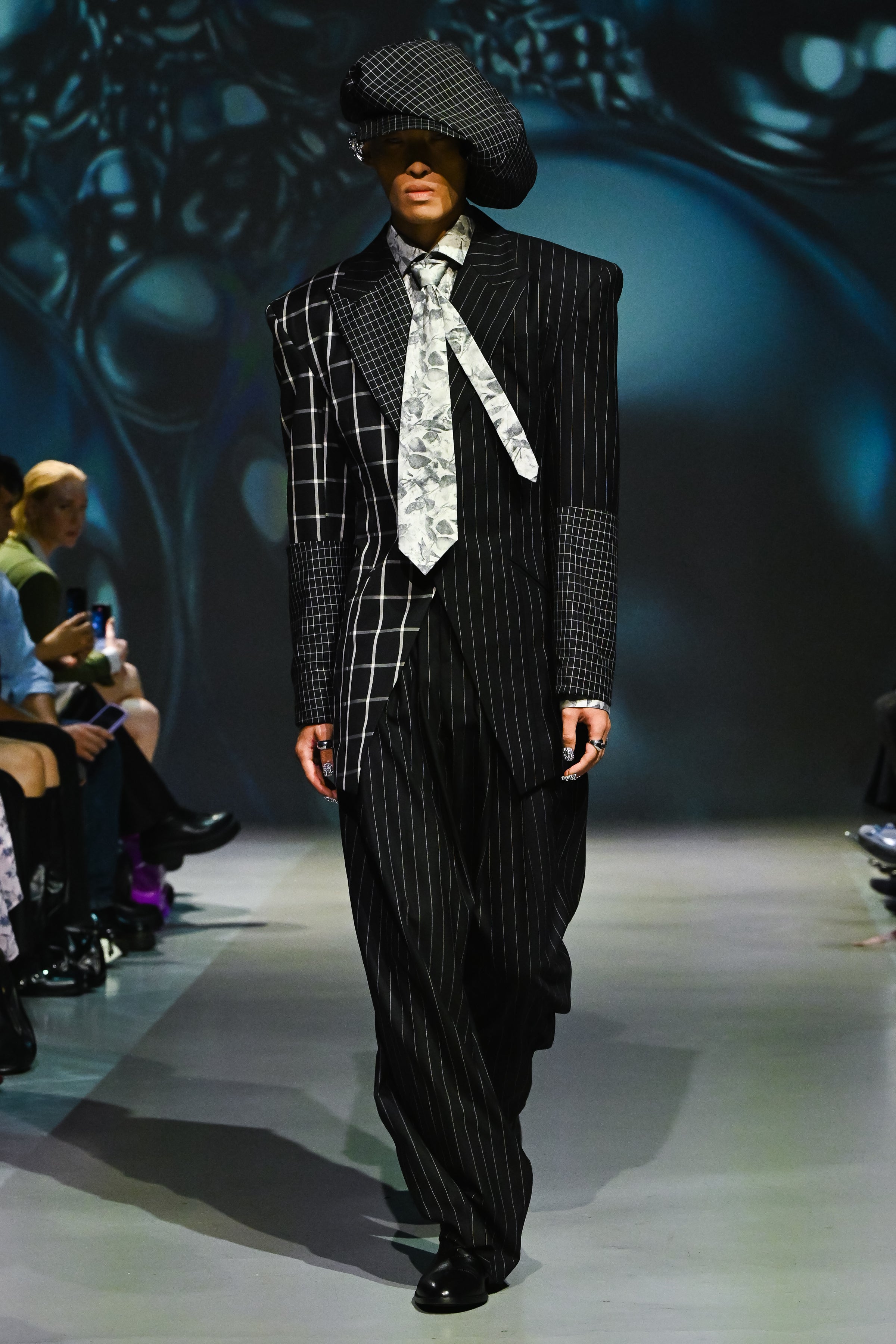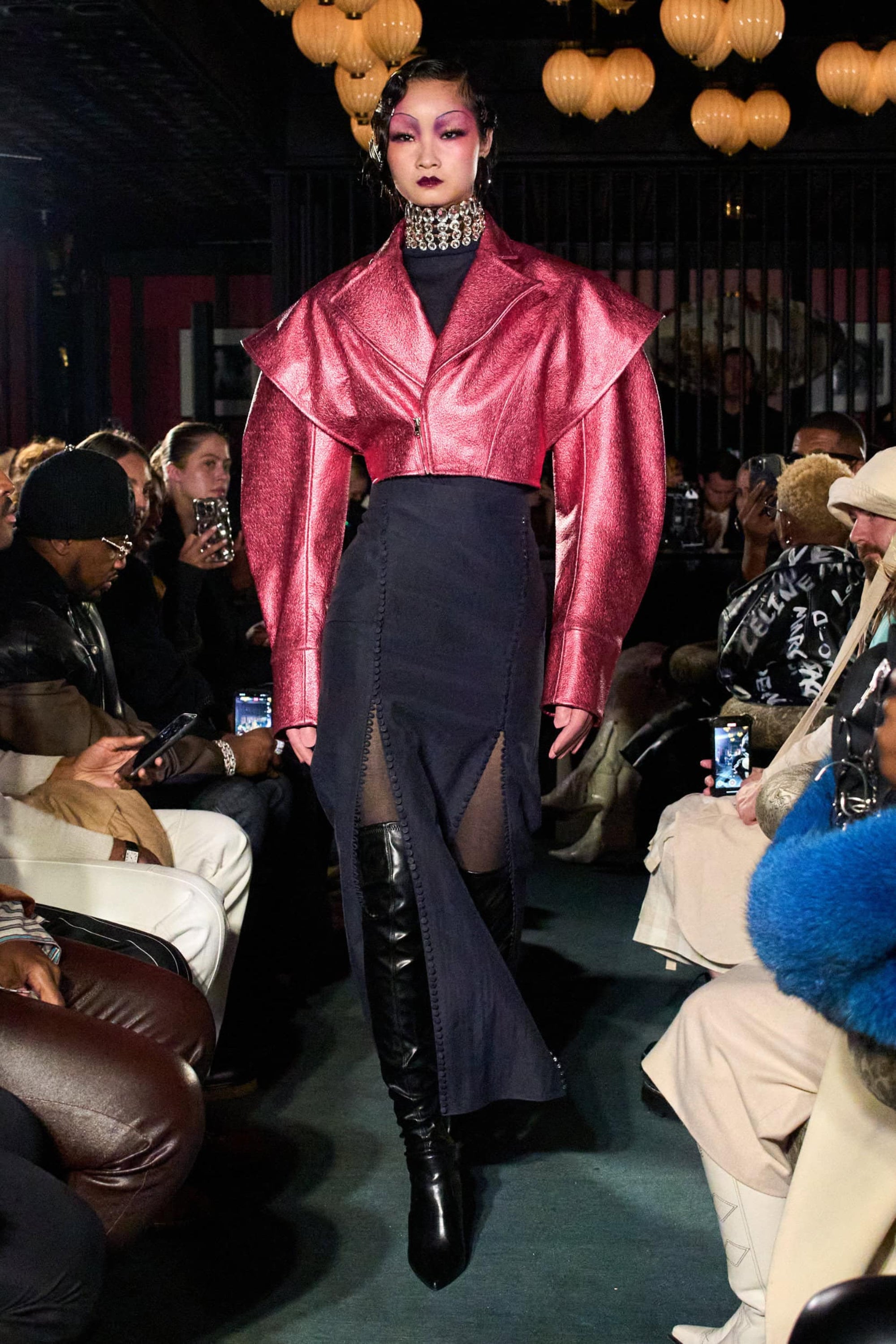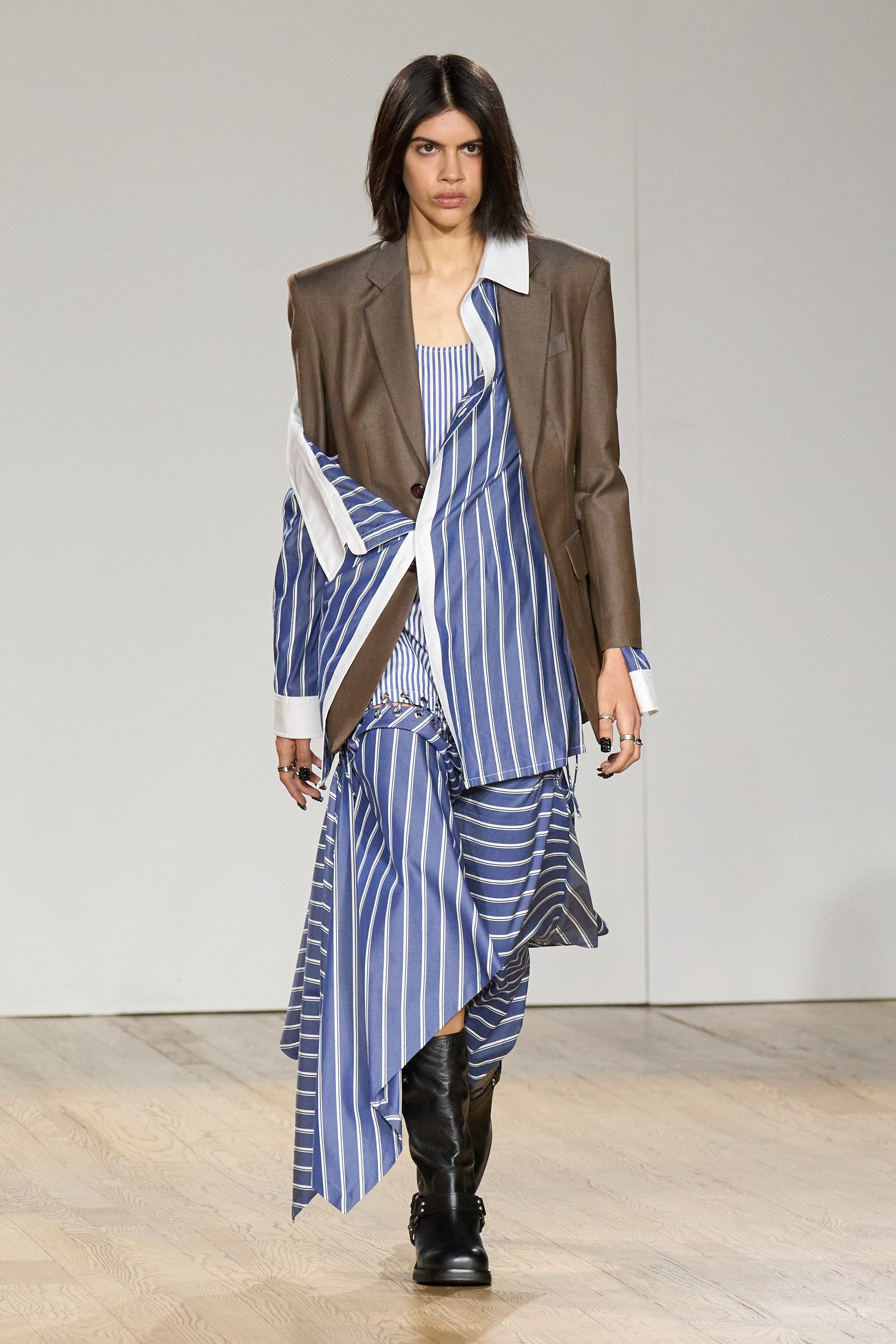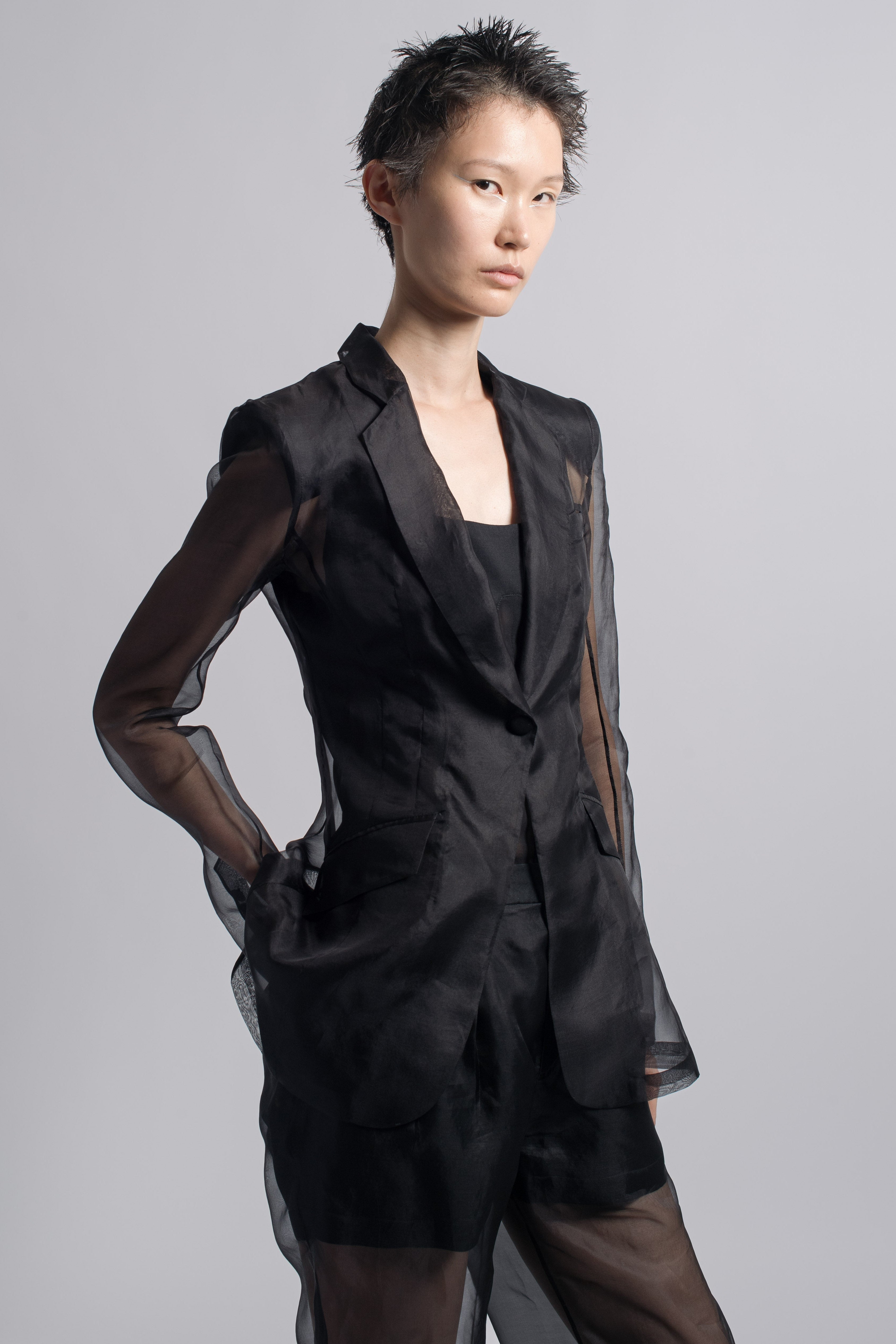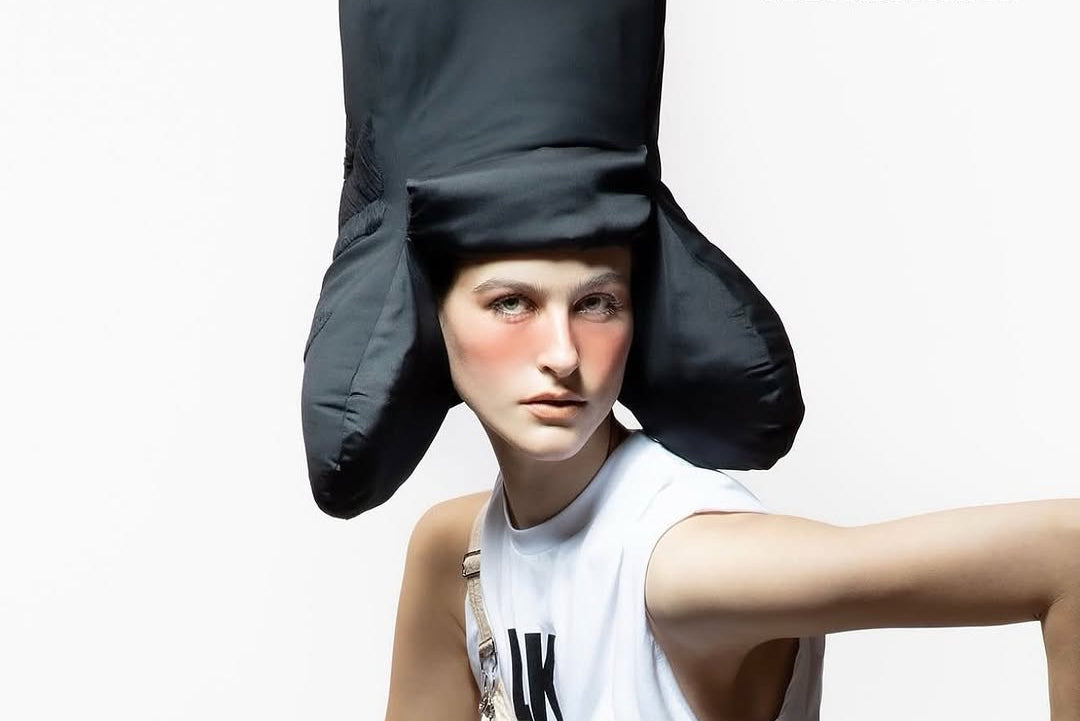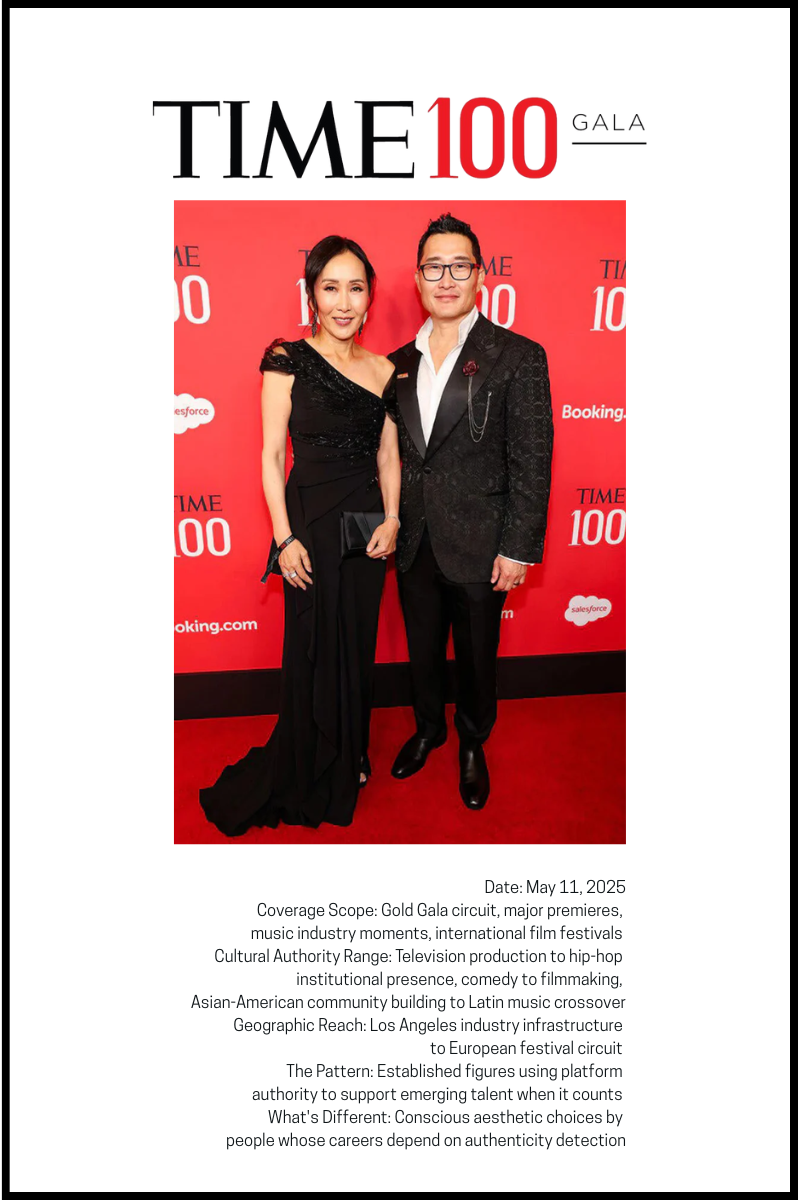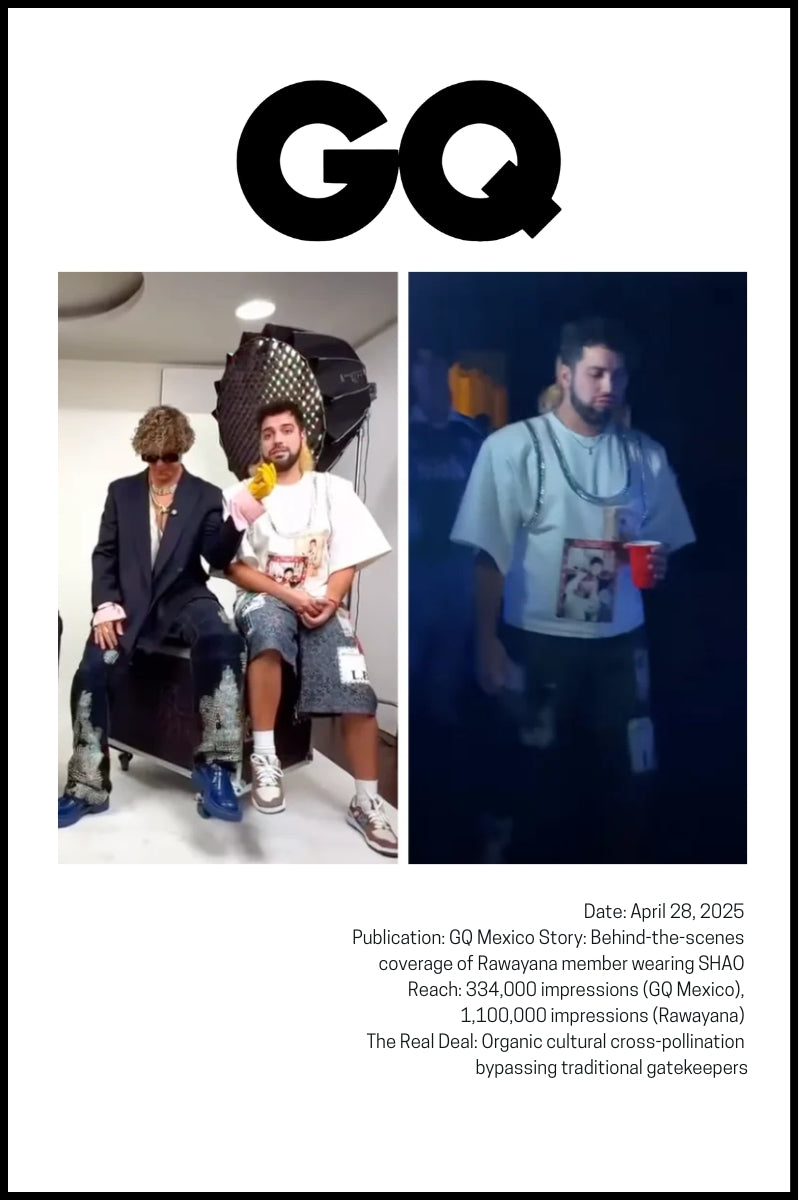The Business of Being Seen
Magazine covers still function as cultural currency, but the exchange rate has shifted dramatically since the days when a single Vogue spread could launch careers. V Magazine's decision to feature custom SHAO work represents something closer to investment banking than traditional fashion publicity—they're betting on long-term cultural relevance rather than immediate commercial impact.
The gold suit itself performs dual functions that most fashion coverage misses entirely. Surface level: visual impact that stops thumbs mid-scroll, the kind of metallic magnetism that Instagram algorithms reward. Deeper frequency: construction that bridges SHAO's core cultural synthesis without performing it like dinner theater. Traditional Chinese tailoring principles adapted for contemporary American proportions, creating garments that exist in the space between reverence and reinvention.
This technical approach reveals something essential about how authentic cultural fusion actually works versus how it gets marketed. Most "East meets West" fashion operates like a themed restaurant—decorative elements borrowed from one tradition applied to familiar Western silhouettes, cultural cosplay designed to signal worldliness without requiring actual cultural fluency. SHAO's construction embeds synthesis at the molecular level, creating hybrid techniques that honor both traditions while serving neither master exclusively.
The choice of gold as material carries specific weight in this context. Unlike the logo-heavy wealth displays that characterized luxury fashion during the early 2000s—when logomania reached its cocaine-fueled peak and subtlety felt like poverty—SHAO's approach to precious materials operates with the confidence of old money. The gold whispers where others shout, which might be the most punk rock statement possible in contemporary luxury fashion.
Celebrity as Cultural Laboratory
Romanov's collaboration with SHAO through V Magazine illuminates something crucial about how celebrity styling has evolved beyond simple aspiration-peddling. Traditional celebrity fashion operated on borrowed glamour economics—designers loan pieces to create temporary associations with star power, audiences want to emulate star aesthetics, everyone pretends the transaction serves culture rather than commerce.
Contemporary celebrity fashion, particularly at the luxury level, functions more like cultural experimentation. Audiences engage with fashion choices as artistic statements rather than lifestyle blueprints, creating space for collaborations that generate dialogue rather than simple promotional exchange. Romanov wearing custom SHAO gold operates in this experimental territory, using celebrity visibility to explore questions about cultural authenticity and contemporary masculinity that extend far beyond seasonal fashion cycles.
The V Magazine platform amplifies these conversations by providing editorial context that transforms celebrity styling into cultural commentary. Their decision to feature this collaboration as cover story rather than interior editorial signals recognition that something more significant than typical fashion content is occurring here—the kind of cultural cross-pollination that defines movements rather than simply documenting them.
This dynamic reflects broader changes in how celebrity functions within fashion ecosystems. Previous generations of celebrity styling operated on aspiration—audiences wanted to emulate star aesthetics, fashion magazines facilitated that desire through careful styling and strategic product placement. Contemporary celebrity fashion operates more like cultural think tanks, using celebrity visibility to test ideas about identity, authenticity, and luxury's evolving relevance.
The Technical Poetry of Precious Metals
Working with gold in tailoring requires understanding how precious metals behave under the specific stresses that come with being human—body movement, environmental conditions, photographic lighting that can make or break a $50,000 photo shoot. Gold conducts heat, reflects light unpredictably, and responds to humidity in ways that can transform a garment's silhouette throughout a single editorial session.
SHAO's technical mastery becomes evident in how the gold suit photographs across V Magazine's editorial spread. The garment maintains structural integrity while accommodating the dynamic requirements of fashion photography—a balance that requires intimate understanding of both metallurgy and pattern-making. This technical foundation allows the conceptual elements to function properly; without construction expertise, cultural synthesis remains performance art rather than actual innovation.
The choice to feature this level of technical complexity in V Magazine signals something significant about how luxury fashion media approaches craftsmanship. Traditional fashion coverage treats construction as invisible infrastructure—interesting to industry insiders but irrelevant to general audiences, like discussing the plumbing in architectural criticism. But when craftsmanship becomes this visually dramatic, when technical expertise creates rather than simply supports the aesthetic impact, the boundaries between craft and concept dissolve entirely.
This technical approach distinguishes SHAO from designers who approach metallic materials as surface effects rather than construction challenges. Most metallic fashion reads like costume jewelry—visually impressive but structurally compromised, designed for photography rather than wear. SHAO's gold suit functions as actual clothing that happens to be made from precious metal, creating the kind of cognitive dissonance that makes fashion criticism necessary.
Historical Echoes and Contemporary Rebellion
Metallic suiting in fashion photography carries historical resonance that extends from David Bowie's space-age glamour through Grace Jones's architectural severity to contemporary artists like FKA twigs whose metallic couture suggests transformation rather than simple decoration. These precedents establish metallic garments as vehicles for identity exploration rather than personal decoration, fashion that signals becoming rather than being.
SHAO's gold suit for Romanov operates within this historical tradition while updating it for contemporary cultural contexts. The garment's Eastern-influenced construction techniques create visual language that wouldn't have been possible during previous decades of metallic fashion, when most designers worked within exclusively Western tailoring traditions. This cultural expansion of the metallic fashion vocabulary reflects broader changes in how global fashion systems operate and how cultural authenticity functions within luxury markets.
The V Magazine editorial context allows these historical connections to resonate without becoming academic. The photography and styling choices create visual dialogue between past and present that enhances rather than explains the garment's cultural significance, treating audiences as culturally literate participants in ongoing fashion conversations rather than passive consumers of style information.
Contemporary fashion's relationship with historical precedent operates like sample-based music production—successful pieces create new meaning through intelligent recombination rather than simple repetition. SHAO's gold suit samples from multiple traditions while creating something genuinely hybrid, the kind of cultural synthesis that honors influences without being constrained by them.
The Economics of Custom Luxury
Behind the cultural and aesthetic dimensions of this V Magazine feature lies a business model that challenges traditional luxury fashion economics. Custom work, particularly at SHAO's level of technical complexity, operates on entirely different financial mathematics than ready-to-wear production or even traditional haute couture systems, where the economics still pretend to make sense.
The investment required to create pieces like Romanov's gold suit—in terms of materials, labor hours, and technical expertise that can't be outsourced to factories—typically generates returns through brand elevation rather than direct sales. This approach reflects broader shifts in how emerging luxury brands build market position, using high-visibility custom work to establish cultural authority that eventually translates into commercial success across broader product categories.
V Magazine's coverage amplifies this brand-building strategy by providing editorial legitimacy that connects SHAO to established luxury fashion narratives while highlighting what makes the brand distinct. The result creates what marketing strategists call "earned media"—publicity that carries more cultural weight than traditional advertising because it emerges from editorial rather than commercial contexts, the difference between recommendation and advertisement.
This dynamic reveals something essential about how contemporary luxury brands navigate cultural authenticity versus commercial viability. Traditional luxury fashion operates on heritage narratives—century-old houses trading on historical continuity and established cultural capital. Emerging luxury brands like SHAO must create cultural authority through demonstrated innovation rather than inherited prestige, using custom work and editorial features to build the kind of cultural credibility that established houses take for granted.
The Future of Fashion Synthesis
The success of SHAO's V Magazine collaboration points toward broader possibilities for how fashion can function as cultural bridge-building rather than simple aesthetic expression. As global fashion systems become increasingly interconnected while simultaneously demanding greater cultural authenticity—a tension that creates both opportunity and contradiction—approaches like SHAO's offer models for sustainable cultural exchange within luxury fashion.
The editorial attention generated by this collaboration suggests market appetite for fashion narratives that extend beyond seasonal trend cycles or celebrity lifestyle promotion. Audiences increasingly engage with fashion content that offers cultural insight alongside aesthetic inspiration, creating opportunities for brands that can deliver both dimensions simultaneously without compromising either.
V Magazine's decision to feature this work as cover story rather than interior editorial reflects recognition that fashion's most interesting current developments occur at intersection points—where different cultural traditions create new possibilities, where custom craftsmanship meets celebrity visibility, where technical innovation enables rather than simply supports conceptual exploration.
The questions this collaboration raises about cultural authenticity, luxury's contemporary relevance, and fashion's role in cultural dialogue extend far beyond individual editorial features or seasonal fashion cycles. They point toward fundamental changes in how fashion functions within broader cultural systems, changes that will likely define luxury fashion's development throughout the remainder of this decade.
The gold suit becomes, in this context, less important as individual garment than as demonstration of possibility—proof that contemporary luxury fashion can honor cultural heritage while creating genuinely new aesthetic language, that celebrity collaboration can generate cultural dialogue rather than simple promotional exchange, that technical expertise can serve larger purposes than craftsmanship for its own sake.
Whether this approach scales beyond individual editorial features remains the defining question for brands attempting to navigate cultural authenticity within commercial systems designed to reward replication rather than innovation. The V Magazine cover story suggests one possible answer: that authentic cultural synthesis creates its own market by offering experiences that existing luxury fashion can't duplicate or easily commodify.
In choosing to highlight SHAO's work through Romanov's cover story, V Magazine positions itself at the forefront of these conversations, using editorial authority to amplify voices that might otherwise remain within fashion industry insider circles. The result creates the kind of cultural impact that transcends typical fashion media coverage—content that starts conversations rather than simply reporting them, fashion that suggests futures rather than documenting presents.
Cited Sources:
-
V Magazine. "V154: Golden Rules with Taras Romanov." May 3, 2025. https://vmagazine.com/article/v154-golden-rules-with-taras-romanov/
-
V Magazine Instagram. Cover post featuring Taras Romanov in gold SHAO suit. May 3, 2025. https://www.instagram.com/p/DJMoVNjSrLe/
-
V Magazine Instagram. Editorial post featuring Taras Romanov in gold SHAO suit. May 3, 2025. https://www.instagram.com/p/DJMvNnQSdFN/
-
V Man Instagram. Cover feature post. May 3, 2025. https://www.instagram.com/p/DJMoVNjSrLe/
-
V Man Instagram. Editorial feature post. May 3, 2025. https://www.instagram.com/p/DJMvNnQSdFN/
